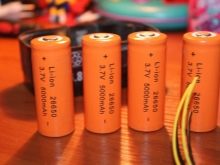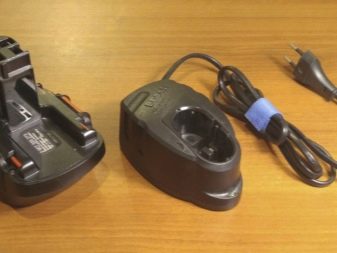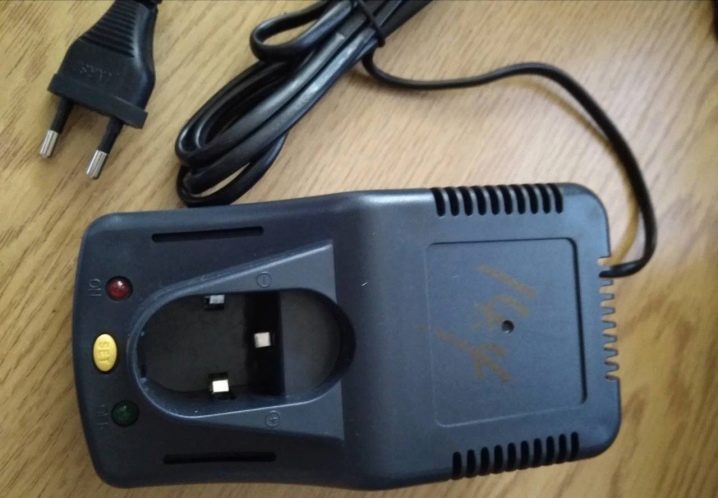Features of chargers for screwdriver

The cordless screwdriver greatly simplifies the installation of fasteners, especially since it is not tied to an outlet - you can even work on the street or in rooms where there is no electricity. At the same time, one of the most important components of such a unit is the charger, because in many respects the degree of ease of use of the device depends on it.



What it is?
The screwdriver battery charger is a device that allows you to replenish the battery power loss caused by the use of the tool. Due to the ability to charge the battery many times, the battery itself can be relatively small in size and capacity, as long as the number of recharge cycles is large, and the charger provides a high rate of recovery of the initial charge.



All chargers can be globally divided into 2 classes: built-in and remote. In the first case, there is no need to specially remove the battery for charging - a cable with an electric plug is connected directly to the body of the instrument (or even permanently attached to it), which is quite convenient. Remote chargers are a separate mechanism that involves removing the battery from the screwdriver body, inserting it into a special clip, and the latter has the same cable with a plug and is plugged into an outlet. Each of the solutions has its own advantages and disadvantages, but more on that later.


If the above-described division into classes does not fundamentally affect the operation of the mechanism, then the correspondence of the type of charger to the type of battery is critically important. The fact is that even today there are several types of batteries for power tools, each of which has its own characteristics of work. If the charger does not meet the required parameters, this can lead to very rapid damage to the battery. To understand what criteria a charger should have, let's briefly consider the features of all the main types of batteries.
- Nickel cadmium batteries today they are already quite rare - their popularity is falling due to many factors, including the toxicity of the contents, the ability to quickly self-discharge, high weight with a relatively low charge, and the "memory effect". The last criterion means that the battery must always be completely discharged first, and then fully charged, if this rule is not followed, its capacity, already low, will begin to decrease literally before our eyes. Perhaps the only huge advantage of this type of batteries is their ability to work normally at any low temperatures. At the same time, they are also capable of withstanding high loads, therefore chargers for them are often made with the ability to charge as quickly as possible - this is very important, since you always need to charge from 0% to 100%.
- Nickel metal hydride batteries are considered to be an improved version of nickel-cadmium - the shortcomings are generally repeated, but they are all expressed to a much lesser extent. In addition, toxic components are not visible in the contents of such batteries.The advantages are also very similar to those of the previous type of batteries, because these batteries are already much more common, and the chargers for both types are very similar. The only indicator where metal hydride power supplies are worse than cadmium power supplies is cost.
- Li-ion batteries are rightly considered the most modern and the best from the technical point of view. They are devoid of most of the disadvantages of the above-described batteries, for example, they weigh little with a significant amount of charge, self-discharge by a few percent per month of inactivity, and are completely devoid of the "memory effect". For a long time they were criticized for a somewhat accelerated discharge when working in frosty conditions, but in recent years this problem has also been gradually being solved. True, there are still drawbacks, and the highest cost is far from the only one. So, it is highly undesirable to discharge such a battery completely - after that it may not restore its original capacity, although the plus is that it can be recharged at any time due to the absence of the "memory effect". Another problem is the possibility of the battery exploding when overheated from overcharging, therefore the charger for such a battery must be equipped with a microcontroller.



Among other things, chargers can differ in voltage - 12, 14.4 or 18 volts (this indicator must necessarily correspond to that recommended in the instructions for the screwdriver). As additional options, there is a special possibility of accelerated charging, as well as indication of the charge level and automatic shutdown in the event of a full charge or some unforeseen situation. The presence of additional functions negatively affects the cost of the charger.


Principle of operation
The charger should not be taken as a simple cable that allows you to power the battery from an electrical outlet - this device is always somewhat more complicated. Depending on the exact set of functions of a particular instance, it can be arranged in different ways, however, in general, the methods for achieving the goal are always approximately the same. Since it is impossible to charge the battery of a screwdriver directly from a 220 V outlet, a key part of any charger is a step-down transformer, which provides a significant reduction in voltage. He himself, as a rule, does not lower the voltage down to the desired value - the current acquires the necessary characteristics only later, passing through diode bridges and microcircuits.


So that the entire filling of the charger, not to mention the battery or the screwdriver as a whole, does not burn out from too high a voltage in the power supply network, a fuse is installed at the very beginning of the circuit. Charge limiting is usually accomplished in one of the two most common ways. - either the microcontroller measures the current in the battery, or the charging time is limited by a timer. The first option is good in the case of lithium-ion batteries, since they can be charged at any time, which means that the exact charging time cannot be determined. In this case, overcharging threatens an explosion, therefore it is very important that the microcontroller is able to determine the charge level and turn off the electricity supply in time. The timer is good for recharging different types of nickel batteries - they are not afraid of overcharging, moreover, they must be completely discharged before the procedure, because the charging time is always approximately the same.



For the sake of increased ease of use, some expensive models of chargers are also equipped with indicators, which are usually ordinary LEDs. Often they perform different functions - one can demonstrate the fact that the device is connected to the network, the other shows that the current is not lost anywhere in the microcircuits and enters the battery, the third can even indicate the approximate level of charge, highlighting only a certain part of the line in which they are built.


Types and types
There are also universal chargers for all types of batteries, but still, in most cases, the best solution will be a charger that is optimal for the needs of a particular battery. Interestingly, numerous reviews indicate the imperfect correspondence of the "native" chargers supplied with the screwdriver itself. Say, manufacturers often save on this part, which is why even a new tool can break down rather quickly. For this reason, many consumers prefer to assemble chargers on their own, but in this case it is worth strictly adhering to the scheme and the correspondence of all parts.


With built-in power supply
The built-in charger makes the cordless screwdriver similar to the mains one - it simply plugs into the socket, and when charging is complete, the cable is either disconnected or hidden in a special compartment. Such an analog mechanism mainly functions as a voltage stabilizer, it allows charging the battery without removing it from the device case. A significant disadvantage of this solution is that during charging, the tool cannot be used with a spare battery, since the only place for the battery is already taken. On the other hand, the likelihood of losing or forgetting the power supply is minimized, since it is not a separate mechanism and will always be at hand - in the same place as the screwdriver itself.
Given that replacing such a built-in power supply is a significant problem, manufacturers usually try to make the mechanism conscientiously, therefore, there should be no problems with updating the charger - it will turn out to be quite durable. The need to carry out the highest quality charger leads to the fact that it becomes the best solution for a lithium screwdriver - it can be charged at any time, and because of its integration into a large case, there are no problems with equipping the unit with microcontrollers to turn off the current supply.

With external power supply
The external power supply for the analog charger is an alternative solution to what was described above. It works in a fundamentally different way: here, for charging, the battery is removed from the screwdriver body and installed in the socket of the charger itself, which is a completely separate mechanism. This solution seems to be good for the reason that it allows you to charge one battery while the screwdriver itself works, powered by the second. This fact even largely neutralizes the characteristic drawback - the very low charging speed of such devices, which often throws them into the category of household devices that are not designed for long-term autonomous operation.
It is chargers of this type that often turn out to be universal, aimed at working with different types of batteries from the three described above. This is because manufacturers, in an effort to provide the consumer with the maximum choice of positive qualities of the battery, offer both a lithium-ion and a nickel-cadmium battery in the delivery set. The presence of a separate case allows you to build a more complex circuit into it, which allows you to set the necessary power parameters for each case, however, such a solution, of course, will take up a little more space.


Pulse
These chargers, in contrast to the two analogue ones described above, turn out to be both the most expensive and the most "smart", and therefore professional screwdrivers should be considered their main field of application. As befits an expensive unit, it is almost always designed for batteries of different types, and most importantly, it has the ability to charge extremely quickly, literally within an hour, in order to minimize possible downtime. For efficient work with nickel-cadmium batteries suffering from the "memory effect", such a charger also has a fast discharge function.
At the same time, one of the important advantages of a pulse charger is its small size with a fast supply of electricity. Theoretically, it is possible to assemble an analog solution similar in characteristics, which will be cheaper, however, in this case, the dimensions of the charger will be approximately comparable to the dimensions of the entire screwdriver.

Charging rules
In order for the charger and battery to work properly in the future, certain charging rules must be followed. If the instructions for the screwdriver say about this separately, or even the purchased battery or charger has its own instructions, they must be carefully read and try not to deviate from what is written under any circumstances. For example, nickel-cadmium batteries usually require a preliminary "overclocking", for this they are completely discharged and charged three times in a row, after each discharge they wait at least another 8 hours before recharging.
According to numerous reviews, ignoring this recommendation leads to the fact that the battery does not reach the declared amount of charge. Only after passing the procedure three times, the battery can be connected for charging and full use, however, operation is permissible only after reaching one hundred percent charge. In the future, recharging is possible only after reaching zero charge.


With lithium-ion batteries, everything is much simpler - they do not need any overclocking, and you can charge them at any time. At the same time, when buying a cheap charger, you need to understand that it may not provide for automatic shutdown, in which case it is the owner's responsibility to ensure that the battery does not overheat, otherwise its explosion is not excluded. The recommended temperature for charging batteries, by the way, is in the range of 10-40 degrees above zero, it is not recommended to get out of this range.



For the period of inactivity, it is advisable to remove the batteries from the tool, without leaving them inside the case. The chargers themselves should be purchased only in specialized mechanisms; it is risky to experiment in this area by purchasing cheap Chinese blocks. As for the duration of the charging process, it is better to check this point additionally in the instructions. It's good if the charger assumes automatic shutdown when the desired level is reached, but if not, surprises are possible, because for pulse chargers, the minimum charging time can be only half an hour, and for analog chargers, it can reach 7 hours. If there is no automatic shutdown, but there is a charge level indicator, then it is better to disconnect the battery immediately after reaching 100%, even if the instructions say that a one-time overexposure does not threaten dire consequences.



For the features of chargers for a screwdriver, see the video below













The comment was sent successfully.